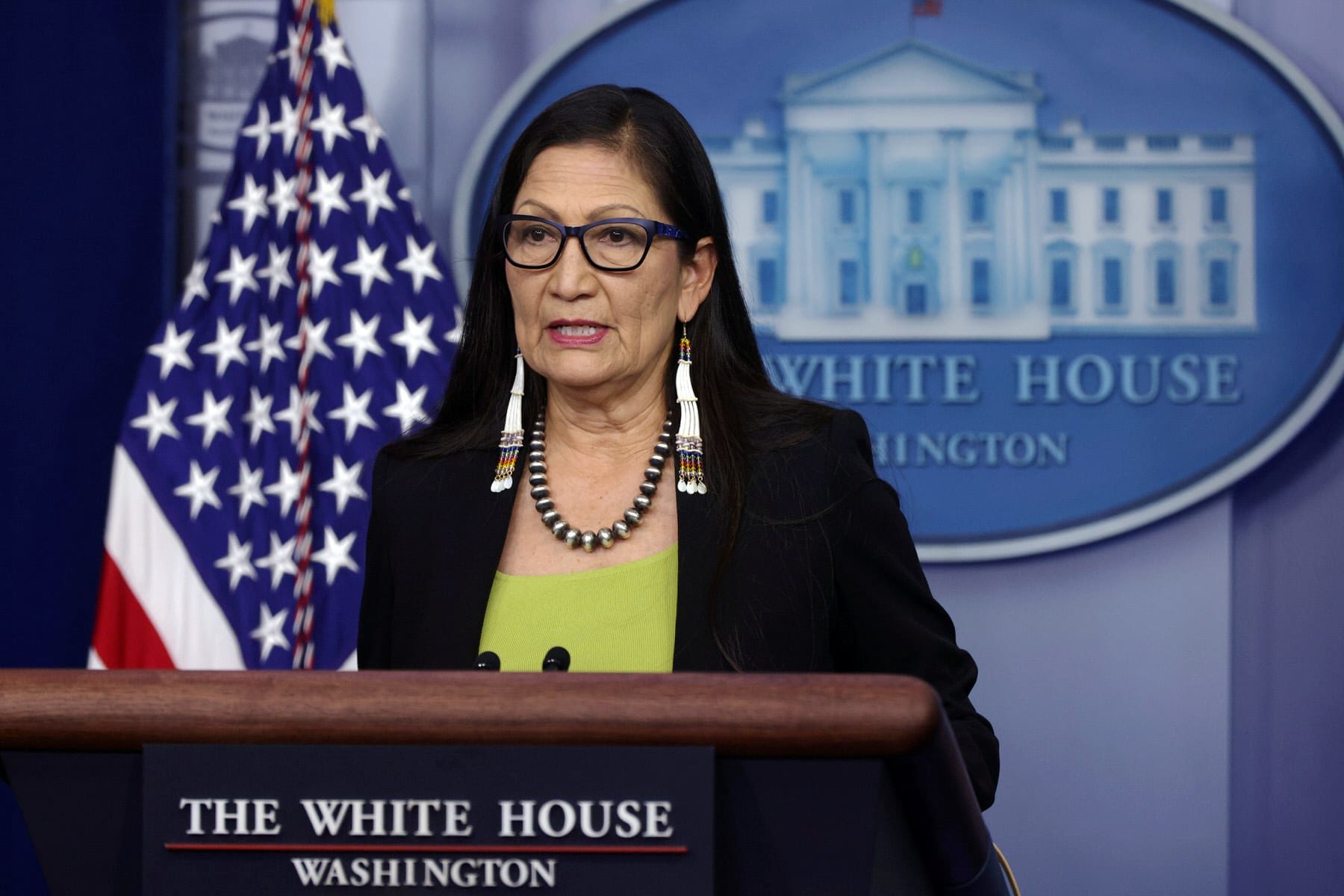On May 11, 2022, Secretary of the Interior Deb Haaland and Assistant Secretary for Indian Affairs Bryan Newland released Volume One of the investigative report for the Federal Indian Boarding School Initiative. The report found that between 1819 and 1969, the United States operated or supported 408 boarding schools across 37 states or territories. This initial investigation revealed at least 53 unmarked burial sites across the school system. Further research is expected to identify more sites.
Ultimately, the report concludes that federal Indian boarding schools resulted in the death of over 500 American Indian, Alaska Native, and Native Hawaiian children. In addition, over 1000 other federal and non-federal institutions, including Indian day schools, sanitariums, asylums, orphanages, and stand-alone dormitories, were also identified by the Federal Indian Boarding School Initiative for their involvement in the education of American Indian, Alaska Native, and Native Hawaiian children. The full report can be found here.
The report affirms that the goal of the boarding schools was forced cultural assimilation concurrent with Indian territorial dispossession. The report investigated the short-term and long-term consequences of the system on Indian Tribes, Alaska Natives, and Native Hawaiian communities.
The effects on indigenous communities come not only from removal of children from their families and communities but also from the common practices of the boarding schools. Common practices included renaming Indian children with English names, cutting the hair of children, discouraging the use of native languages, religions, and cultural practices, and organizing the students to perform military drills. The federal Indian boarding school system included manual labor as a predominant aspect of the school curricula, which had deadly impacts on native children and resulted in an education focused on irrelevant vocational options.
The report requested an extension of the Federal Indian Boarding School Initiative investigation due to the COVID-19 pandemic and funding delays for the Department of the Interior. The report also made the following recommendations:
- Continue a full investigation into the federal Indian boarding school system, including:1) producing a list of marked and unmarked burial sites at federal Indian boarding schools; and 2) produce an approximation of the total amount of federal funding used to support the federal Indian boarding school system, including any monies that may have come from tribal and individual trust accounts held by the United States.
- Identify surviving federal Indian boarding school attendees and documents their experience.
- Adopt standard practices for engaging with impacted tribes and agencies to support research, preservation, and data collection.
- Congressional actions in support of the Native American Graves Protection and Repatriation Act, Native language revitalization, Indian health research, and a memorial to recognize the native children who were impacted by the federal Indian boarding school system.
Volume One follows a June 22, 2021, memorandum from the Secretary, directing Interior agencies to coordinate an investigation into the federal Indian boarding school system. The goal of the investigation was to examine the scope of the boarding school system, the location of the schools and burial sites, and identify the children who attended the schools.

